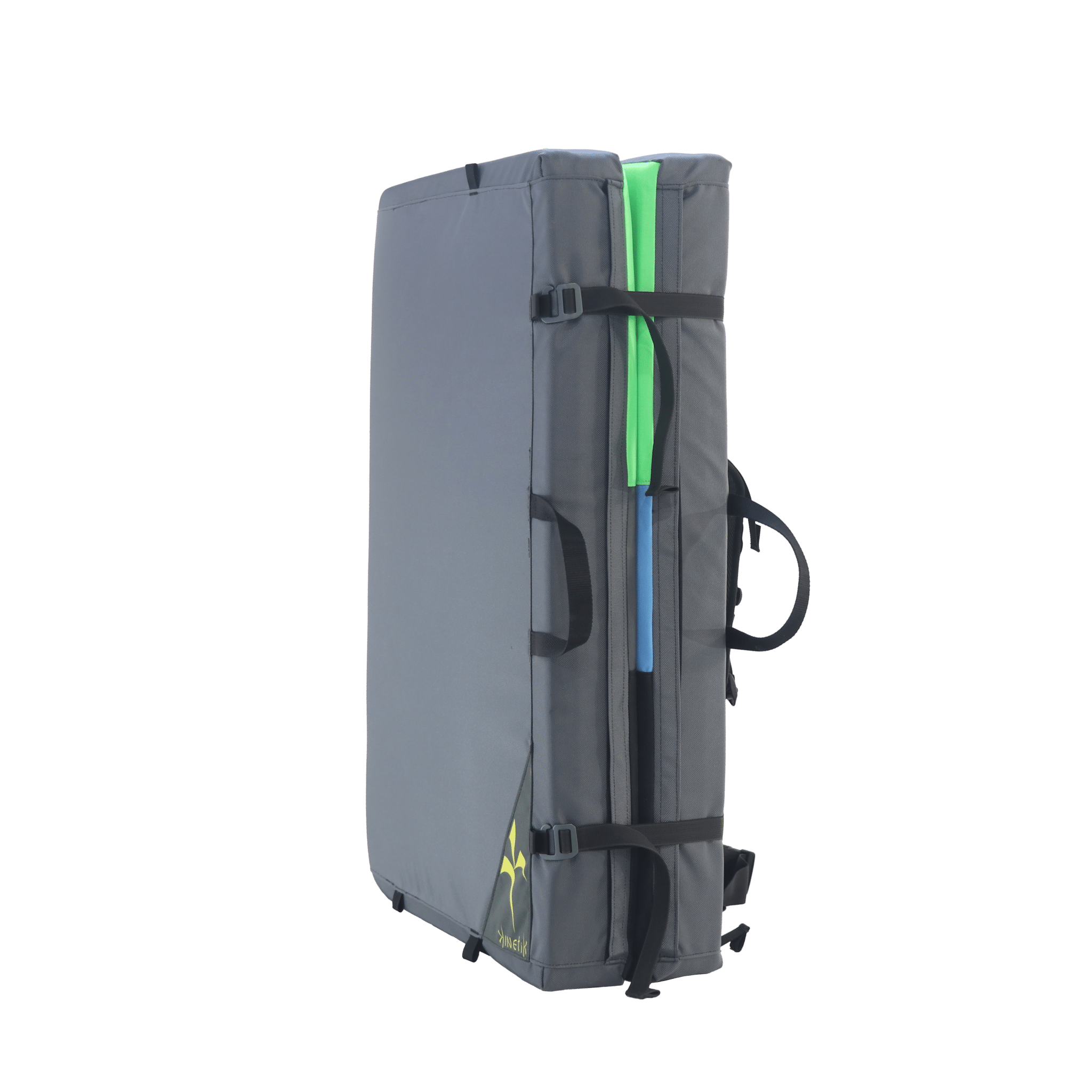Early Days: The Birth of the Crash Pad
Bouldering crash pads have revolutionized the sport, evolving from humble beginnings to high-tech, feature-rich products that improve safety and performance. While early bouldering pioneers relied on rudimentary protection—like pieces of carpet, straw mats, or even old mattresses—modern crash pads offer climbers unmatched security for falls while working on challenging problems.
The origins of bouldering pads can be traced back to the 1980s and early 1990s. Before their invention, climbers often improvised with old carpets or mattresses to cushion falls. Notable figures like John Sherman, who was instrumental in pushing bouldering at Hueco Tanks, and companies like Kinnaloa, played pivotal roles in the commercialization of crash pads. The first officially marketed pad, the Kinnaloa Sketchpad, appeared in 1992. This breakthrough product incorporated many features still used today: durable nylon covers, dual-density foam, and carrying straps.
Soon after, the popularity of bouldering pads skyrocketed. With improved safety, climbers could attempt more difficult problems, which in turn fueled the growth of bouldering as a standalone discipline.
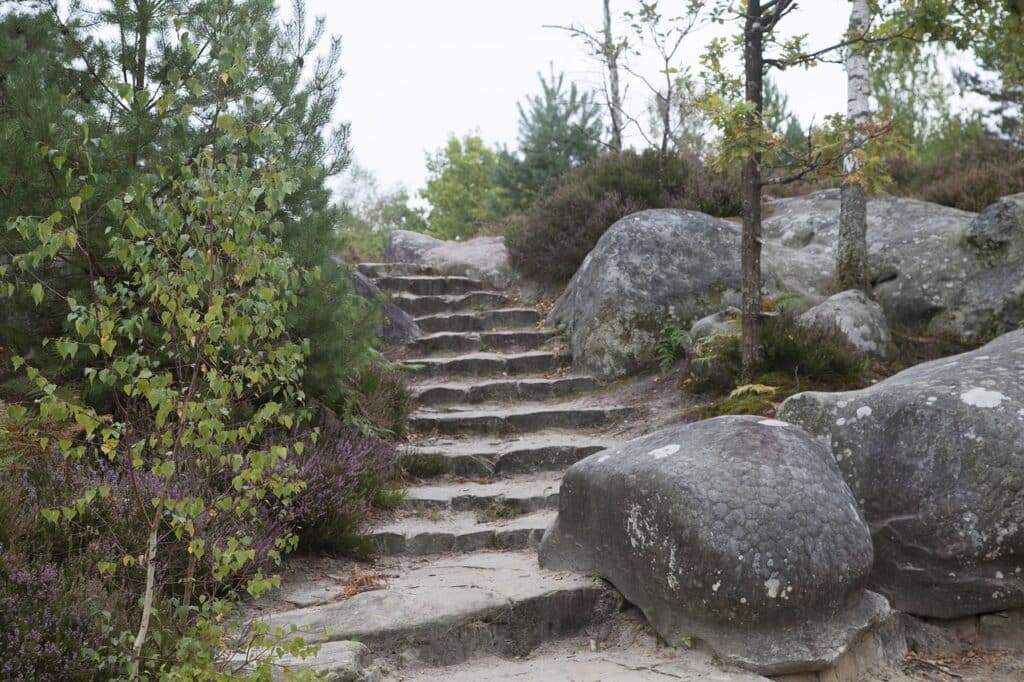
In the 1940s and 1950s, climbers in Fontainebleau began to focus on bouldering as a standalone discipline. They started using rudimentary protection like sandbags, small rugs, or old mattresses to protect against falls on the forest’s rocky ground.
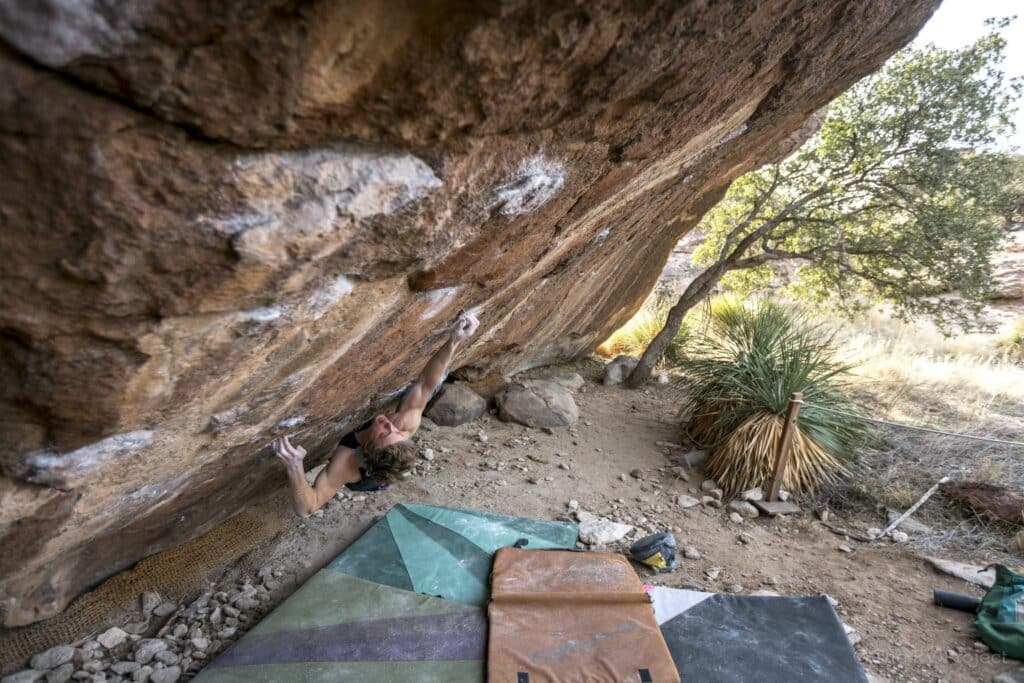
In the 1970s, climbers like John Sherman and other pioneers of bouldering began using homemade pads made from foam rubber and other materials. John used these to tackle a new wave of climbing development in Hueco Tanks, Texas.
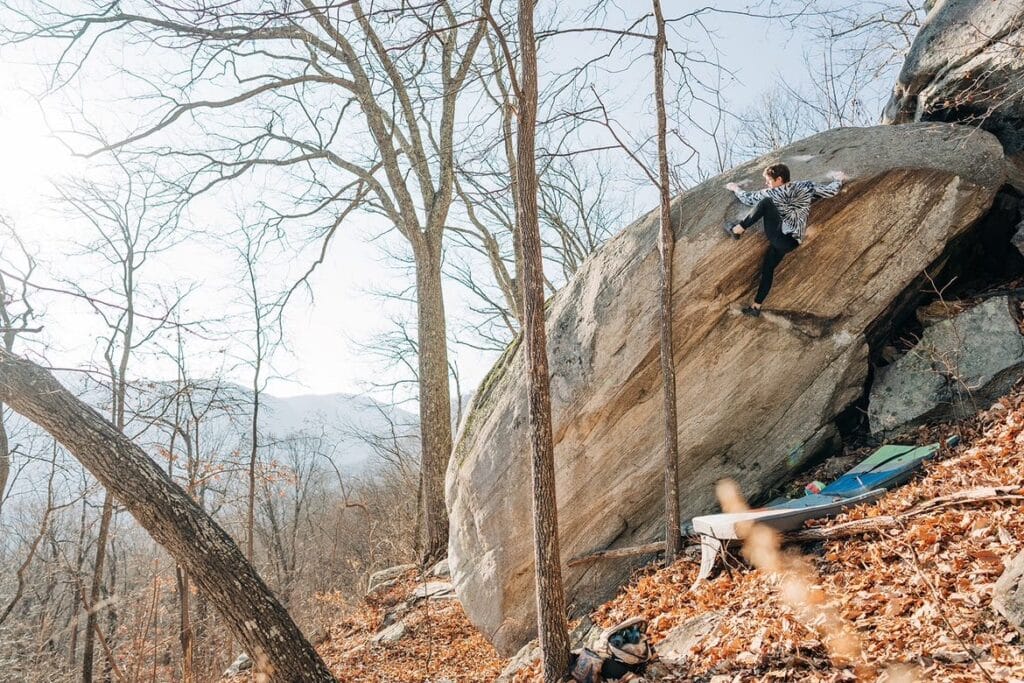
Bouldering pads gained widespread popularity in the mid-1990s, largely driven by the surge in popularity of bouldering as a sport. By the late 1990s and early 2000s, the use of crash pads became mainstream as more manufacturers began producing them.
Commercial Production
The commercial production of crash pads began in earnest during the late 1980s and early 1990s, driven by the rising popularity of bouldering as a standalone discipline. Prior to this, climbers relied on makeshift solutions like old mattresses or carpet scraps, which offered minimal protection. Recognizing the need for more effective safety gear, companies like Metolius, Franklin Climbing (now part of Black Diamond), and Misty Mountain started producing purpose-built crash pads. These early commercial pads were designed with layered foam construction, combining open-cell foam for impact absorption with closed-cell foam for force distribution
The Rise of Modern Crash Pads: Materials and Design
Today’s crash pads, also known as bouldering mats, have come a long way in terms of materials and design. New materials like 1000-denier nylon and reinforced Cordura fabric provide enhanced abrasion resistance, ensuring pads can withstand rough outdoor conditions over time. Modern pads are also constructed with multi-layer foam systems, usually combining a firmer closed-cell foam layer for impact absorption and a softer open-cell foam for cushioning. These layers help reduce the risk of injury from falls on rocky, uneven terrain, while innovations in folding mechanisms (hinge or taco) make pads easier to transport.
The thickness of crash pads varies from 3 to 6 inches, with larger models offering more surface area and better protection. Hinged mats fold neatly for portability, while taco-style mats maintain a seamless surface for landing. Straps for easy transport, including shoulder and waist straps, are now standard.
Innovation in Portability: Folding and Carrying Solutions
The development of folding designs in crash pads was a game-changer, especially as bouldering evolved from roadside problems to more remote climbs. In the early days, bouldering often took place near the road, making bulky, difficult-to-carry pads less of an issue. However, as climbers began seeking out more challenging problems with longer approaches, the need for compact and portable pads became essential. Modern crash pads, designed to fold compactly and equipped with comfortable backpack straps, offer climbers an easy way to transport their gear over long distances.
Specialized Pads: From Sit-Start Pads to Modular Systems
As bouldering grew in popularity, the need for specialized crash pads became more apparent, especially with the rise of highball boulder problems—tall, challenging climbs that require significant protection to complete safely. These problems often demand large amounts of crash pads to ensure climbers have adequate coverage in case of a fall. This led to the development of modular systems, allowing climbers to connect multiple pads seamlessly for broader, more secure landing zones. This innovation, which emerged in the early 2000s, has become essential for tackling highball problems.
The Future of Crash Pads: What’s Next?
As bouldering continues to evolve, so too will crash pads. We can expect to see more advancements in materials, reduced weight, increased comfort/portability and niche designs for specific uses. Kinetik Climbing is at the forefront of this innovation, constantly developing new products that meet the demands of modern climbers. Follow us on instagram to stay up to date with the latest in crash pad technology.
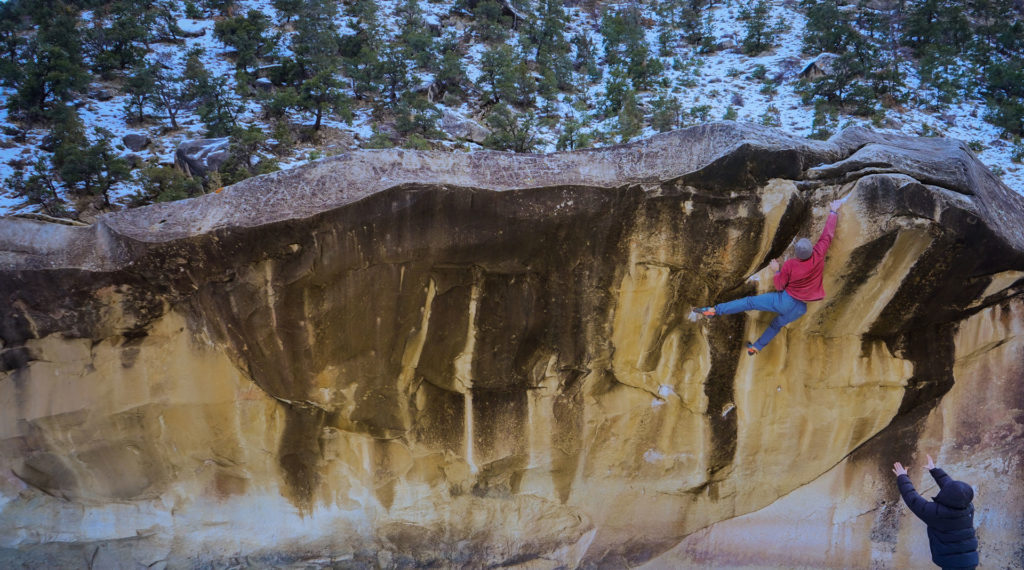
A Crucial Piece of Gear
Modern crash pads have changed the face of bouldering, making it safer and more accessible. Whether you’re a beginner or a seasoned pro, investing in a quality crash pad like the Newton Bouldering Pad is essential for pushing your limits. With Kinetik’s range of innovative products, you can be sure you’re using gear designed by climbers, for climbers.


